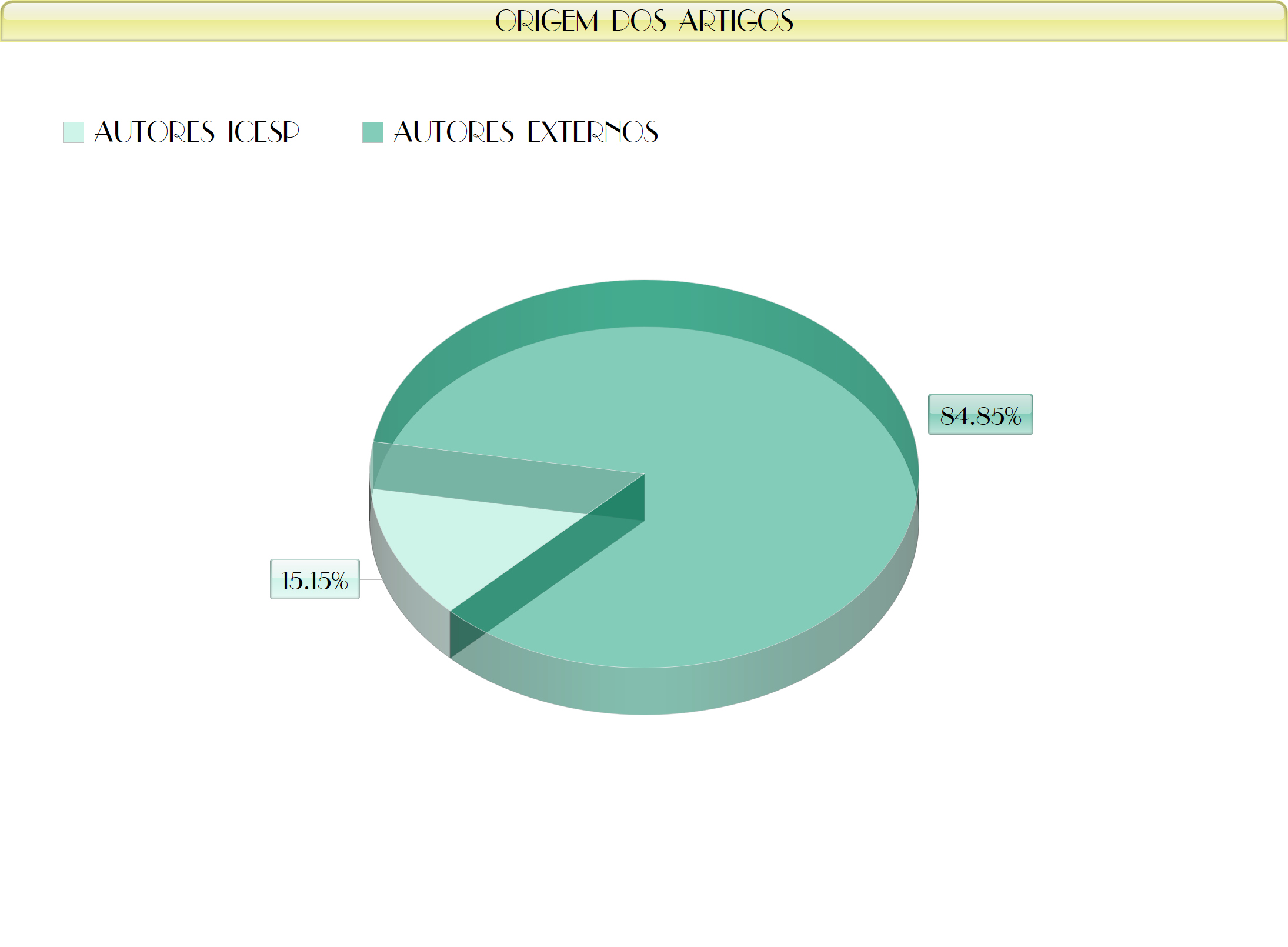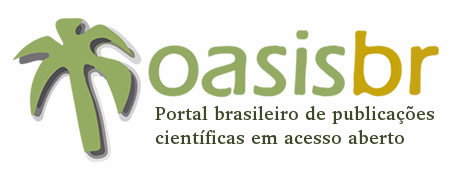Polimorfismo da glutationiona-S-transferase P1 e marcadores de estresse oxidativo em mulheres infectadas por papilomavírus humano. | Glutathione-S-transferase P1 polymorphism and oxidative stress markers in women infected by human papilomavirus.
Resumo
Objetivo: analisar o polimorfismo genético de GSTP1 localizado no cromossomo 11.q13.2, exon 5 (Ile105Val) e associar a marcadores de estresse oxidativo e infecção por HPV. Métodos: o DNA foi extraído de raspados cervicais para identificação do HPV por PCR e genotipagem utilizando HPV-Screening PapilloCheck® e de sangue total para análise do polimorfismo por RFLP-PCR. O estresse oxidativo foi analisado através dos níveis séricos das espécies reativas ao ácido tiobarbitúrico, grupos carbonil, grupos tiol e atividade da catalase. Resultados: 75% das mulheres HPV positivas apresentaram infecções simples e os tipos virais 16 e 45 foram mais frequentes. 56,25% das mulheres apresentaram o genótipo variante Ile105Val GSTP1 (Ile/Val ou Val/Val) com prevalência de heterozigotos (43,75%). Entre as mulheres HPV positivas, a presença do variante alélico levou a um maior risco de desenvolver lesões cervicais (OR = 29,44). Mulheres infectadas com HPV (especialmente de alto risco) apresentaram menor atividade da catalase e aumento dos grupos carbonila. Considerando a presença dos genótipos variantes Ile/Val e Val/Val, as mulheres infectadas apresentaram aumento dos marcadores de estresse oxidativo e as mulheres HPV negativas apresentaram diminuição da capacidade antioxidante. Conclusão: estes achados sugerem uma possível influência do genótipo variante GSTP1 no aumento do estresse oxidativo e suscetibilidade a lesões cervicais em mulheres infectadas com HPV.
Palavras-chave: gstp1; espécies reativas de oxigênio; hpv; lesão cervical.
-----------------------------------------------------------------------------------------
Abstract
Objective: to analyze the genetic polymorphism of GSTP1 located on chromosome 11q13.2 exon 5 (Ile105Val) and its association with oxidative stress markers and HPV infection. Methods: DNA were extracted from cervical scrapes for HPV identification by PCR, genotyping using HPV-Screening PapilloCheck®, and from whole blood for analysis of polymorphisms by RFLP-PCR. Oxidative stress was analyzed by measuring the serum levels of thiobarbituric acid reactive species, carbonyl groups, thiol groups, and catalase activity. Results: of all HPV-positive women, 75% had simple infections. Viral types 16 and 45 were the most frequent. A total of 56.25% of women had variant Ile105Val GSTP1 genotype (Ile/Val or Val/Val) with a heterozygous prevalence (43.75%). Among the HPV-positive women, the presence of the allelic variant led to a higher risk of developing cervical lesions (OR = 29.44). Women infected with HPV (especially the high-risk type) showed lower catalase activity and an increase in carbonyl groups. Considering the presence of variant genotypes Ile/Val and Val/Val, the infected women presented an increase in some oxidative stress markers, and HPV-negative women showed a decreased antioxidant capacity. Conclusion: these results indicate the potential influence of variant GSTP1 genotype on increased oxidative stress and susceptibility to cervical lesions in women infected with HPV.
Keywords: gstp1; reactive oxygen species; HPV; cervical injury.
Palavras-chave
Texto completo:
Artigo em InglêsReferências
Klug SJ, Hukelmann M, Blettner M. Knowledge about infection with human papillomavirus: A systematic review. Prev Med. 2008; 46(2): 87-98.
Oliveira A, Delgado C, Verdasca N, Pista A. Biomarkers of cervical carcinogenesis associated with genital human papillomavirus infection. Acta Medica Port. 2013; 26(2): 139-144.
Bouvard V, Baan R, Straif K, Grosse Y, Secretan B, El Ghissassi F, Benbrahim-Tallaa L, Guha N, Freeman C, Galichet L, Cogliano V. WHO International Agency for Research on Cancer Monograph Working Group. A review of human carcinogens-part B: biological agents. Lancet
Oncol. 2009; 10(4): 321-322.
INCA (Instituto Nacional de Câncer), Ministério da Saúde, Governo do Brasil. https://www.inca.gov.br/tipos-de-cancer/cancer-do-colo-do-utero. Accessed Nov 2019.
Marullo R, Werner E, Zhang H, Chen GZ, Shin DM, Doetsch PW. HPV16 E6 and E7 proteins induce a chronic oxidative stress response via NOX2 that causes genomic instability and increased susceptibility to DNA damage in head and neck cancer cells. Carcinogenesis. 2015; 36(11): 1397-1406.
Cruz-Gregorio A, Manzo-Merino J, Lizano M. Cellular redox, cancer and human papillomavirus. Virus Res. 2018; 246: 35-45.
Catalá, A. Lipid peroxidation modifies the picture of membranes from the ‘‘Fluid Mosaic Model’’ to the ‘‘Lipid Whisker Model’’. Biochimie. 2012; 94(1): 101-109. https://doi.org/10.1016/j.biochi.2011.09.025
Smith JA, Park S, Krause JS, Banik, NL. Oxidative stress, DNA damage, and the telomeric complex as therapeutic targets in acute neurodegeneration. Neurochem Int. 2013; 62(5): 764-775.
Ratnam DV, Ankola DD, Bhardwaj V, Sahana DK, Kumar MN. Role of antioxidants in prophylaxis and therapy: a pharmaceutical perspective. J Control Release. 2006; 113(3): 189-207.
Mannervik B. The isoenzymes of glutathione transferase. Adv Enzymol Relat Areas Mol Biol. 1985; 57: 357-417.
Hayes JD, Pulford DJ. The Glutathione S-Transferase Supergene Family: Regulation of GST and the Contribution of the Isoenzymes to Cancer Chemoprotection and Drug Resistance. Crit Rev Biochem Mol Biol. 1995; 30(6): 445-520.
Palapattu GS, Sutcliffe S, Bastian PJ, Platz EA, De Marzo AM, Isaacs WB, Nelson WG. Prostate carcinogenesis and inflammation: emerging insights. Carcinogenesis. 2004; 26(7): 1170-1181.
Watson MA, Stewart RK, Smith GB, Massey TE, Bell DA. Human glutathione S-transferase P1 polymorphisms: Relationship to lung tissue enzyme activity and population frequency distribution. Carcinogenesis. 1998; 19(2): 275-280.
Manju V, Kalaivani Sailaja J, Nalini N. Circulating lipid peroxidation and antioxidant status in cervical cancer patients: a case-control study. Clin Biochem. 2002; 35(8): 621-625.
Georgescu SR, Mitran CI, Mitran MI, Caruntu C, Sarbu MI, Matei C, Nicolae I, Tocut SM, Popa MI, Tampa M. New Insights in the Pathogenesis of HPV Infection and the Associated Carcinogenic Processes: The Role of Chronic Inflammation and Oxidative Stress. J Immunol Res. 2018; 2018: 5315816.
Manos MM, Ting Shin Y, Wright DK, Lewis AI, Broker TR, Wolinsky SM, Manos M, Ting YC. The use of polymerase chain reaction amplification for the detection of genital human papillomaviruses. Cancer Cell. 1989; 7: 209-214.
de Roda Husman AM, Walboomers JMM, van den Brule AJC, Meijer CJLM, Snijders PJF. The use of general primers GP5 and GP6 elongated at their 3’ ends with adjacent highly conserved sequences improves human papillomavirus detection by PCR. J Gen Virol. 1995; 76(4): 1057-1062.
Sobti RC, Kaur S, Kaur P, Singh J, Gupta I, Jain V, Nakahara A. Interaction of passive smoking with GST (GSTM1, GSTT1, and GSTP1) genotypes in the risk of
cervical cancer in India. Cancer Genet Cytogen. 2006; 16692: 117-123.
Papanicolaou GN. A New Procedure for Staining Vaginal Smears. Science. 1942; 95(2469): 438-439.
Solomon D, Nayar R. Sistema Bethesda para citopatologia cervicovaginal: definições, critérios e notas explicativas, 2nd ed. Rio de Janeiro: Revinter, 2005.
Levine RL, Garland D, Oliver CN, Amici A, Climent I, Lenz AG, Ahn BW, Shaltiel S, Stadtman ER. Determination of carbonyl content in oxidatively modified proteins. Methods Enzymol. 1990; 186: 464-478.
Draper HH, Hadley M. Malondialdehyde determination as index of lipid peroxidation. Methods Enzymol. 1990;186: 421-431.
Bulaj G, Kortemme T, Goldenberg DP. Ionization-reactivity relationships for cysteine thiols in polypeptides. Biochemistry. 1998; 37(25): 8965-8972.
Aebi H. Catalase in vitro. Methods Enzymol. 1984; 105; 121-126.
de Aguiar ES, Giacomazzi J, Schmidt AV, Bock H, Saraiva-Pereira ML, Schuler-Faccini L, Duarte Filho D, dos Santos PAC, Giugliani R, Caleffi M, Camey SA, Ashton-Prolla P. GSTM1, GSTT1, and GSTP1 polymorphisms, breast cancer risk factors and mammographic density in women submitted to breast cancer screening. Rev Bras Epidemiol. 2012; 15(2): 246-255.
Barcelos GRM, Grotto D, de Marco KC, Valentini J, Lengert AH, de Oliveira AAS, Garcia SC, Braga GUL, Engström KS, Cólus IMS, Broberg K, Barbosa Jr F. Polymorphisms in glutathione-related genes modify mercury concentrations and antioxidant status in subjects environmentally exposed to methylmercury. Sci Total Environ. 2013; 463-464: 319-321.
Sohail M, Kumar R, Kaul A, Arif E, Kumar S, Adak T. Polymorphism in glutathione S-transferase P1 is associated with susceptibility to Plasmodium vivax malaria compared to P. falciparum and upregulates the GST level during malarial infection. Free Radical Bio Med. 2010; 49(11): 1746-1754.
Millikan R, Pittman G, Tse CK, Savitz DA, Newman B, Bell D. Glutathione S-transferase M1, T1, and P1 and breast cancer. Cancer Epidem Biomar. 2000; 9(6): 567-573.
Curran JE, Weinstein SR, Griffiths LR. Polymorphisms of glutathione S-transferase genes (GSTM1, GSTP1 and GSTT1) and breast cancer susceptibility. Cancer Lett. 2000; 153(1-2): 113-120.
Helzlsouer KJ, Selmin O, Huang HY, Strickland PT, Hoffman S, Alberg AJ, Watson M, Comstock GW, Bell D. Association between glutathione S-transferase M1, P1, and T1 genetic polymorphisms and development of breast cancer. J Natl Cancer Inst. 1998; 90(7): 512-518
Mitrunen K, Kataja V, Eskelinen M, Kosma VM, Kang D, Benhamou S, Vainio H, Uusitupa M, Hirvonen A. Combined COMT and GST genotypes and hormone replacement therapy associated breast cancer risk. Pharmacogenetics. 2012; 12(1): 67-72.
Qasim I, Pandith AA, Sanadhya D, Zahoor W, Iqbal MK, Amin I, Manzoor U, Bhat AR, Shah ZA. Significant influence of GSTP1 Gene Ile105Val polymorphic sequence variation for elevated risk in predisposition to malignant glioma. Meta gene. 2018; 16: 117-121.
Gurioli G, Martignano F, Salvi S, Costantini M, Gunelli R, Casadio V. GSTP1 methylation in cancer: a liquid biopsy biomarker? Clin Chem Lab Med. 2018; 56(5): 702-717.
Singh S. Cytoprotective and regulatory functions of glutathione S-transferases in cancer cell proliferation and cell death. Cancer Chemother Pharmacol. 2015; 75(1): 1-15.
Hayes JD, Flanagan JU, Jowsey IR. Glutathione transferases. Annual Review of Pharmacol Toxicol. 2005; 45(1): 55-88.
Peters WHM, Roelofs HMJ. Effect of long time storage on cytosolic glutathione S-transferase. Biochem Mol Biol Int. 1997; 41(5): 913-917.
Nagle CM, Chenevix-Trench G, Spurdle AB, Webb PM. The role of glutathione-S-transferase polymorphisms in ovarian cancer survival. European J Cancer. 2007; 43(2): 283-290.
Sivoňová M, Waczulíková I, Dobrota D, Matáková T, Hatok J, Račay P, Kliment J. Polymorphisms of glutathione-S-transferase M1, T1, P1 and the risk of prostate cancer: a case-control study. J Exp Clin Canc Res. 2009; 28:32.
Schellekens MC, Dijkman A, Aziz MF, Siregar B, Cornain S, Kolkman-Uljee S, Peters LAW, Fleuren GJ. Prevalence of single and multiple HPV types in cervical carcinomas in Jakarta, Indonesia. Gynecol Oncol. 2004; 93(1): 49-53.
Grace Nirmala J, Narendhirakannan RT. Detection and Genotyping of High-Risk HPV and Evaluation of Anti-Oxidant Status in Cervical Carcinoma Patients in Tamil
Nadu State, India - a Case Control Study. Asian Pac J Cancer Prev. 2011; 12(10): 2689-2695.
Naidu MS, Suryakar AN, Swami SC, Katkam RV, Kumbar KM. Oxidative stress and antioxidant status in cervical cancer patients. Indian J Clin Biochem. 2007; 22(2): 140-144.
Borges BES, Brito EB, Fuzii HT, Baltazar CS, Sá AB, Silva CIM, Santos GFS, Pinheiro MCN. Human papillomavirus infection and cervical cancer precursor lesions in women living by Amazon rivers: investigation of relations with markers of oxidative stress. Einstein (São Paulo). 2018; 16(3): 1-7.
Williams VM, Filippova M, Soto U, Duerksen-Hughes PJ. HPV-DNA integration and carcinogenesis: putative roles for inflammation and oxidative stress. Future Virol. 2011; 1; 6(1): 45-57.
De Marco F, Bucaj E, Foppoli C, Fiorini A, Blarzino C, Filipi K, Giorgi A, Schininà ME, Di Domenico F, Coccia R, Butterfield DA, Perluigi M. Oxidative Stress in HPV-Driven Viral Carcinogenesis: Redox Proteomics Analysis of HPV-16 Dysplastic and Neoplastic Tissues. PLoS One. 2012; 7(3): e34366.
Song S, Gong S, Singh P, Lyu J, Bai Y. The interaction between mitochondria and oncoviruses. BBA-Mol Basis Dis. 2018; 1864(2): 481-487.
Deshpande R, Raina P, Shinde K, Mansara P, Karandikar M, Kaul-Ghanekar R. Flax seed oil reduced tumor growth, modulated immune responses and decreased HPV E6 and E7 oncoprotein expression in a murine model of ectopic cervical cancer. Prostag Oth Lipid. 2019; M 143: 106332.
Ansolin PL, Damin DC, Alexandre COP. Polimorfismos das isoformas M1, T1 e P1 da glutationa S-transferase e associação com os aspectos clínico-patológicas no carcinoma colorretal. Rev Bras Colo-proctol. 2010; 30(3): 281-288.
Aedo-Aguilera V, Carrillo-Beltrán D, Calaf GM, Muñoz JP, Guerrero N, Osorio JC, Tapia JC, León O, Contreras HR, Aguayo F. Curcumin decreases epithelial‑mesenchymal transition by a Pirin‑dependent mechanism in cervical cancer cells. Oncol Rep. 2019; 42(5): 2139-2148. doi: 10.3892/or.2019.7288
Apontamentos
- Não há apontamentos.
Revista Brasileira de Pesquisa em Ciências da Saúde - RBPeCS - ISSN: 2446-5577
Indexadores:













